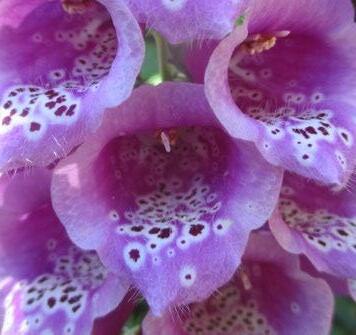
4 minute read
Toxic Plants In Home Gardens, By Tony Tomeo
IN-CLUB AT-HOME NO MORE EXCUSES!
REST OF SUMMER FREE Join Curves today & get the Rest of the Summer FREE! In-club with a Coach At-home with a Coach
Advertisement

30-Minutes HIIT Accountability
Fun, Fast & Safe 30-minute Strength Training Circuit with a Coach
Our skills & knowledge is used to help you reach your goals so you Take control of your health and fitness with Curves in-club or at-home! Get up and get moving! Motivation can be the best you can be! Call Us Today! 831.688.2348 7000 Soquel Dr. Aptos FREE RESISTANCE BAND Combining an in-club Curves membership and MyCurves On Demand means you’ll get: ✓ COACHING in-club or virtual ✓ WORKOUT access to MyCurves On Demand and Curves Club We are here to motivate you as you travel AptosCurves@gmail.com When you sign up for an In-Club & At-Home Membership! ✓ EQUIPMENT included for home workouts ✓ EXERCISE SCIENCE with 28 years of research your journey to improved health & fi tness ✓ FUN, FAST, SAFE 30min total body workout
* Locally Owned and Operated VALUED AT $30 7000 Soquel Dr. • Aptos, CA 95003 (831) 688-2348
aptoscurves@gmail.com • www.facebook.com/CurvesAptos
Real Strength for Real Women
Franchise opportunities available. For more information: Curves.com/BuyCurves
*Parent pays full joining fee and minor child, age 12-18, joins for free. Monthly membership fees also required and vary by location. O *Enrollment fee due up front and varies by location. Offer based on first visit enrollment for a 12-month recurring billing fitness membership. Resistance band included with first month charge. Sales tax will be added and varies by location. Open to new and existing customers. Valid at participating locations only. Cannot be combined with any other offer or discount. No cash value. Offer expires 12/31/21. Club instructions: Select 2021Hybrid er based on first visit enrollment for a combo 12-month recurring billing fitness membership. Sales tax will be added and varies by location. Open to new and returning Curves members. Cannot be combined with any other o er or discount. Valid at participating loc © 2021 Curves. All Rights Reservedations only. No cash value. O er expires May 31, 2022 © 2022 Curves. All Rights

FEATURED COLUMNIST
Toxic Plants In Home Gardens
By Tony Tomeo
Oleander that inhabits freeway medians is poisonous enough to be hazardous. Two tons of Buick cruising at 65 miles per hour past such oleander has more potential to be hazardous. The risk associated with toxic plants within freeway medians is as limited as their accessibility. Remarkably durable and resilient oleander is therefore quite practical.
Realistically, established oleander is quite practical for many landscapes. (Oleander leaf scorch limits the practicality of new installation, though.) It is not the sort of vegetation that is appealing for consumption. Caustic sap should deter anyone who tries. It is poisonous primarily to curious young children or chewing dogs. It is generally safe in their absence.
Foxglove, angel’s trumpet, castor bean, nightshade and poison hemlock are significantly more hazardous because they are easier to consume. The seeds of castor bean and the fruits of nightshade actually seem to be edible. Poison hemlock sometimes mingles with foraged greens. Many diverse toxic plants exhibit hazardously appealing characteristics.
Some toxic plants are appealing enough to come indoors, where cats who never venture outdoors might take an interest in them. Dumb cane (Dieffenbachia) is a popular but very toxic houseplant. Mistletoe, although a parasitic and undesirable weed, is popular as cut foliage at Christmas -- its berries are very toxic. Poinsettia exudes caustic sap if disturbed.
Some toxic plants are toxic only because they are allergens. They affect only those who are allergic to them. Most people are allergic to poison oak. Fewer are allergic to related plants, such as African sumac. Some people are more or less allergic to a few species of Grevillea or Primula. Reaction to such species can be comparable to that of poison oak. Too many toxic plants inhabit home gardens to list. Some are familiar fruit and vegetable plants, such as elderberry and potato. Some should be removed for the safety of children or pets. Selection of new plants can simply and conveniently omit any concerningly toxic plants. Generally though, with responsible interaction, most toxic plants are not too risky. •••
Foxglove
It is no coincidence that its generic name seems more pharmaceutical than horticultural. After all, the cardiac medication digitalis is an extract of foxglove, Digitalis purpurea. The plant is unfortunately very toxic. Because it naturalizes in several regions, it can be more hazardous than standardized medications. It can migrate undetected into home gardens.
Otherwise, foxglove is a delightful warm season annual with a rustic or woodsy style. It is actually a biennial that generates basal foliar rosettes during its first season, and blooms during its second season. Although technically monocarpic (so should die after bloom), it can produce a few short pups to bloom later. Seedlings can appear in random situations.
Plants from nurseries grew during a previous season, so are ready to bloom immediately for early summer. Their seedlings may grow through later summer and autumn, so might bloom for the following summer. Floral stalks generally stand between three and six feet tall. The tubular and somewhat pendant flowers are mostly pinkish purple, pink or white. A few modern varieties bloom yellow or apricot. n •••
Tony Tomeo can be contacted at tonytomeo.
Foxglove is the source of digitalis.











